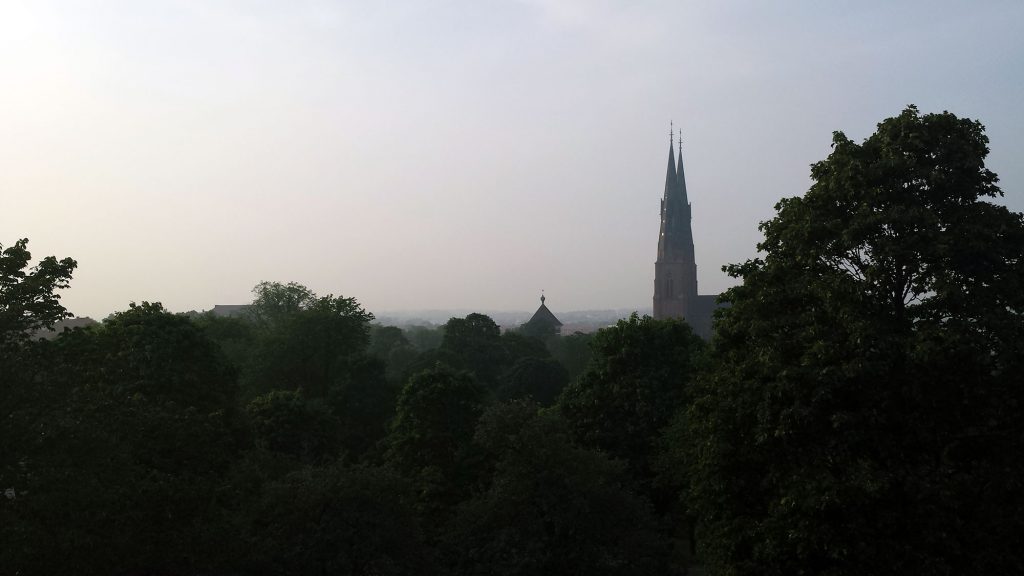Week 1 | Week 2 | Week 3 | Week 4 | Week 5
1.14

Smoke from the forest fire in Västmanland, Uppsala, August 6, 2014, photo by Daniel Mossberg, watch Swedish television program here Vetenskapens värld – Skogsbranden i Västmanland 2014.
Climate change leadership in your own context
This week, we learned about climate change impacts and vulnerabilities, outcomes of the Paris Agreement and the 2°C target, and historical perspectives on narratives, humanity and nature. Now let’s dive into our first discussion.
This step is divided into three parts:
1. Elegy for the Arctic
Before getting into the actual discussion let’s pause for a moment and take in the challenges facing us in other-than-text/numbers way. Watch Ludovico Einaudi – Elegy for the Arctic below for three minutes and relax body and mind.
2. Sea level rise
At the web page Climate Central – Coastal Risk Screening Tool – Comparison: long-term sea level outcomes you can see what different emissions scenarios looks like in sea level rise for different cities world wide. Find additional tools and read more about sea level rise here: Surging Seas: Sea level rise analysis by Climate Central.
How will the place where you live and places you care about be affected by sea level rise? How will other people, animals and ecosystems be affected? Add your thoughts, feelings, photos and videos to the discussion on Twitter #cemuscclmooc or Facebook, or at Studium.
3. Temperature rise and precipitation change
And at Explore Climate Anomalies, Variability, and Uncertainty in Space and Time with the Climate Inspector you can see how different emission scenarios affect temperature rise and precipitation change. Read background article here: Visualizing the Climate’s Future.
How will the place where you live and places you care about be affected by temperature rises and precipitation change? How will other people, animals and ecosystems be affected? Add your thoughts, feelings, photos and videos to the discussion on Twitter #cemuscclmooc or Facebook, or at Studium.
If you want to dig deeper into the issues we’ve covered during week 1, we have a list of optional further reading in the next step. Also we encourage you to look deeper into referenced literature in the various steps throughout the week, if you are interested.
Next week, we will explore how we can bend the curves and move towards a sustainable and better future, and learn about concepts such as climate justice, carbon budgets and social transformations.
© CEMUS and Uppsala University
